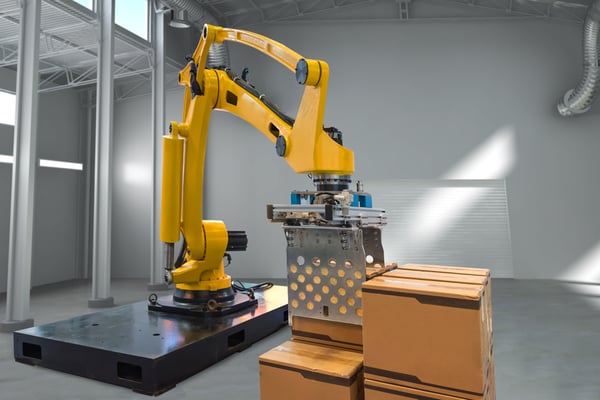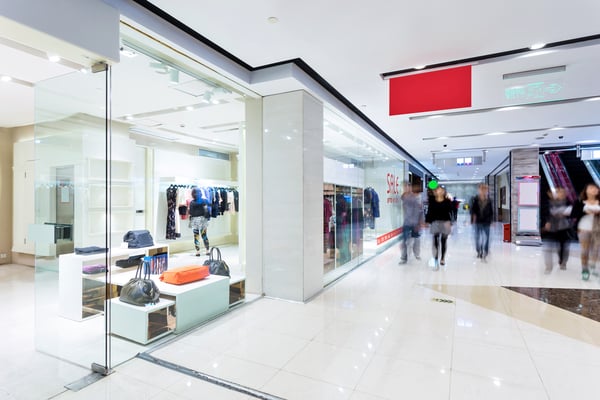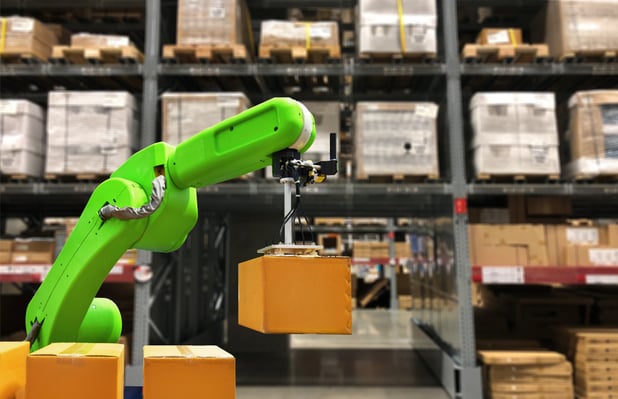2020 was a successful year for the e-commerce sector, despite the economic difficulties caused by COVID-19. Global e-commerce grew by 27.6% in 2020, reaching a sales volume of US$4.28 trillion according to a study by eMarketer. This growth trend is expected to continue and online sales will likely surpass $5 billion in 2021.
An increase in e-commerce requires an expansion of logistics and warehousing services that support virtual marketplaces and e-stores. Micro fulfillment centers have become an attractive solution as they can be deployed in urban areas to shorten the distance between products and customers. Microfulfillment centers also make extensive use of robotics, processing orders faster and using less storage space while saving energy.
Is your company planning to build a microfulfillment center? Get a professional MEP design.
New York Engineers is currently designing the first microfulfillment center on Long Island, located at 1085 Old Country Road in Westbury. The facility is currently used by a chain of department stores, but will be repurposed for industrial use. The microfulfillment center under development will deliver orders from New York to the Hamptons in less than two hours.
Microfulfillment centers are compact thanks to robotics

E-commerce has relied on large-scale distribution centers (e.g., 500,000 sf) located in rural areas, which can serve multiple cities and towns at the same time. Traditionally, orders are processed with a combination of human labor and manually operated vehicles such as forklifts. Conventional distribution centers use large areas because they must provide enough space for human workers and vehicles, and this also limits how high products can be stacked.
- The operation changes completely with picking robots like those used by Urbx Logistics, which are smaller and much faster than human workers and forklifts.
- This allows products to be stacked higher and closer together, as a robot can easily reach specific products when mounted on a rail system.
- Thanks to robotics, distribution centers can become much more compact without affecting performance.
Finding a suitable location for a traditional fulfillment center is difficult in a crowded urban area, but micro fulfillment centers can be set up with much less space. A large number of commercial properties are currently being turned into warehouses, largely because e-commerce is replacing in-store sales. A micro-fulfillment center can be implemented in one of these repurposed properties with relative ease and without major changes to existing facilities.
Microfulfillment centers are closer to customers

A microfulfillment center also improves the online shopping experience, as a shorter distance between the product and the customer allows for faster delivery. Traditional distribution centers located far from cities cannot reach this speed – even if they are updated and fully automated, the existing distance increases delivery time. Robots are also silent, unlike forklifts and other warehouse equipment, meaning a microfulfillment center doesn't cause noise and disruption to neighbors.
Thanks to their design, micro fulfillment centers can be implemented in spaces as small as a few thousand square feet, and there are small modular systems that use less than 2,000 SF. This gives 3PL companies like XPO Logistics and FedEx more flexibility in choosing a location. Retailers also have the option of building a department store and micro-fulfillment center on the same property, simultaneously serving online and in-store sales. This type of distribution center can help a lot in improving reverse logistics processes, as you can process returns much faster.
While microfulfillment centers efficiently bridge the gap between ecommerce products and their final destinations, curating the right inventory is equally crucial. Identifying and stocking top dropshipping products ensures customer satisfaction by ensuring the most popular items are readily available for fast delivery.
Micro-Fulfillment Centers Are Energy Efficient

There are two main ways picking robots contribute to energy efficiency in microfulfillment centers:
- They consume much less electricity than conventional warehouse equipment. They also move more efficiently since they are controlled by AI rather than human operators.
- Unlike human workers, robots can find and select a product with little or no lighting, relying on sensors and a positioning system. On the other hand, traditional warehouses require a lot of lighting to provide safety and visibility for workers.
Cities tend to have higher electricity costs than rural areas, but micro-fulfillment centers compensate for this by being more efficient. Logistics companies can also reduce kilowatt-hours per order processed, which reduces their environmental footprint.
Conclusion
Microfulfillment centers enable automated warehouse operations in urban environments, bringing products closer to the customer and using less space and energy. According to Autostore, a leading provider of microfulfillment solutions, automation can achieve up to four times more storage capacity in the same space and a tenfold increase in performance without hiring more staff.
E-commerce was among the most successful industries in 2020 and this trend will continue even after the COVID-19 pandemic. Established online retailers are expanding their operations, and companies that focused on traditional sales have now implemented online stores. Microfulfillment centers can help meet the growing demand for warehousing and logistics services.

